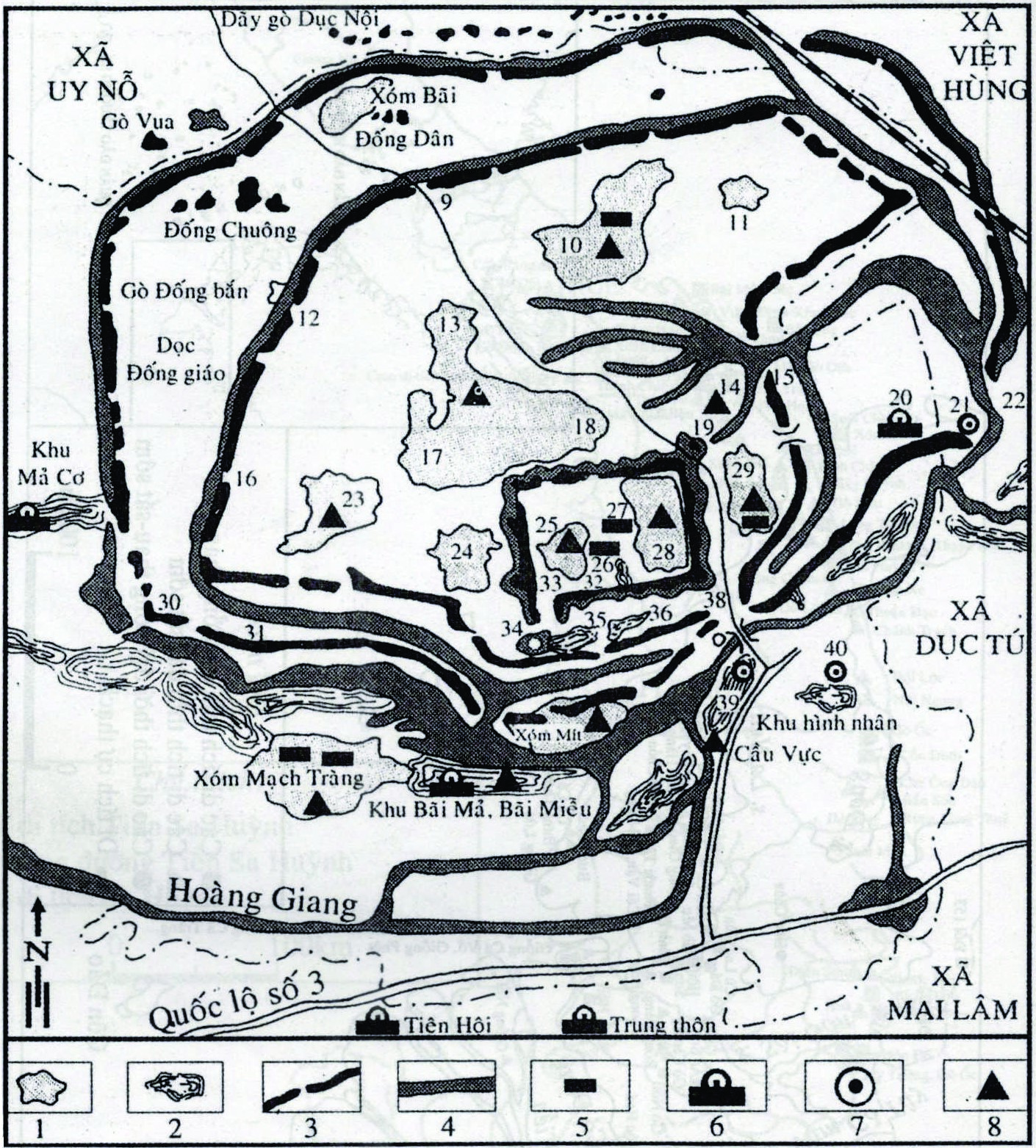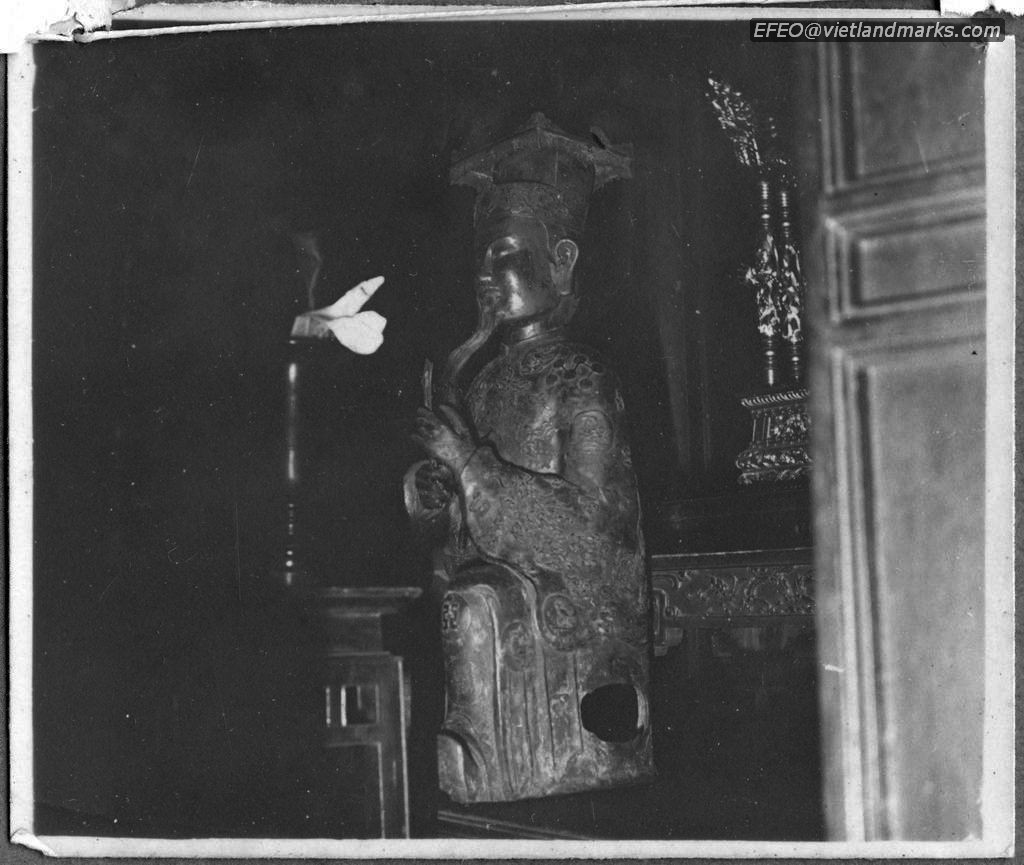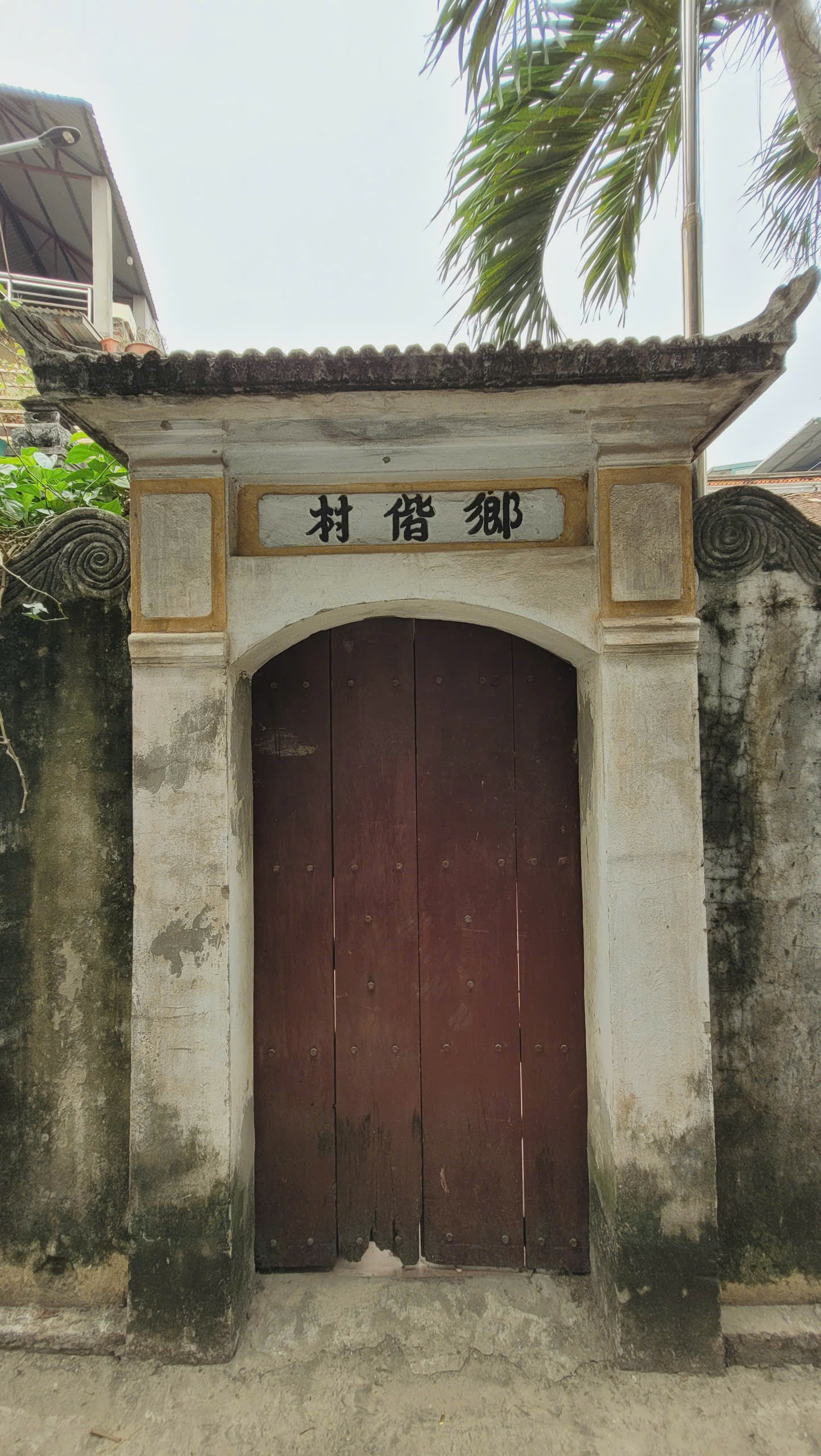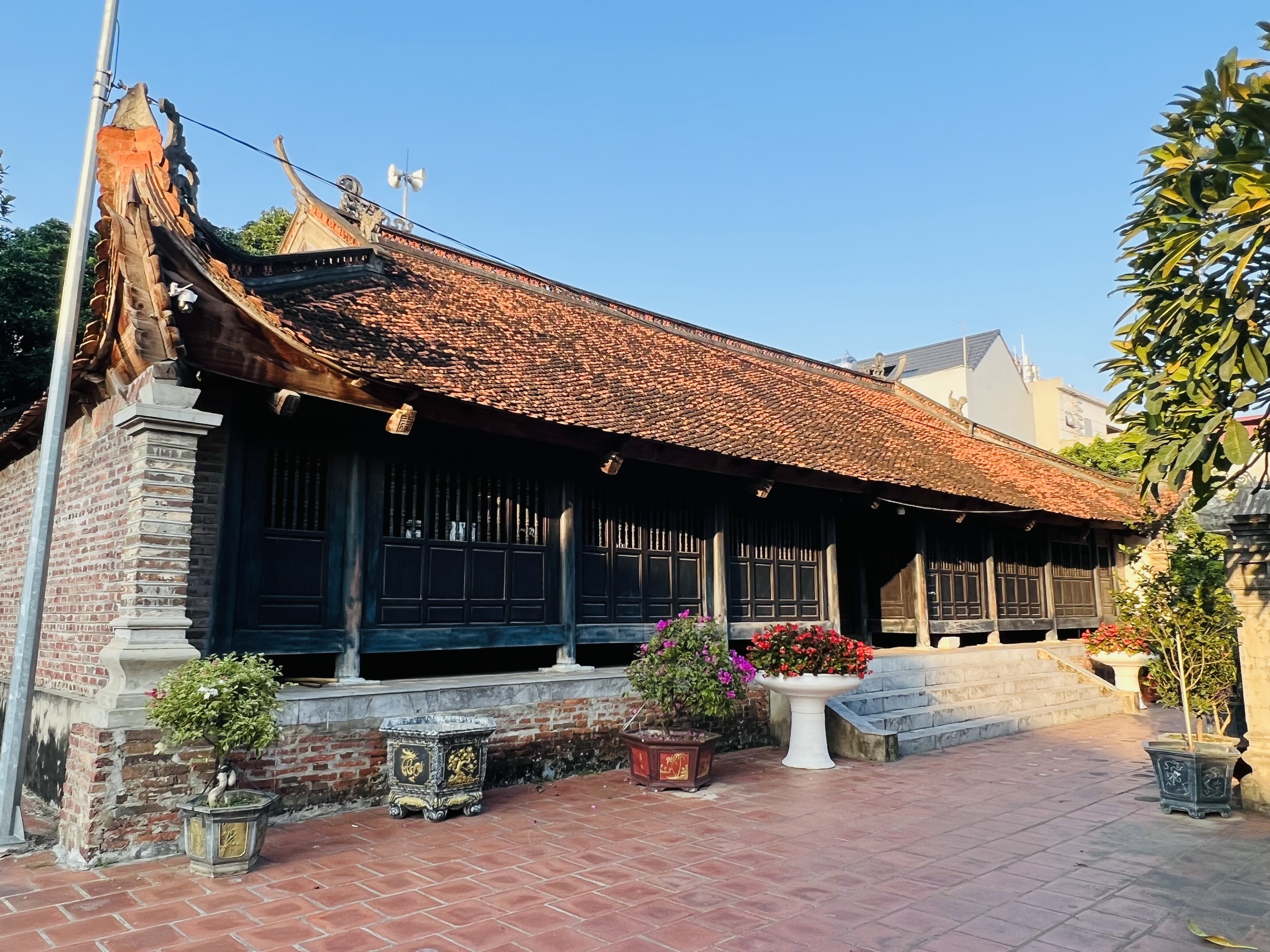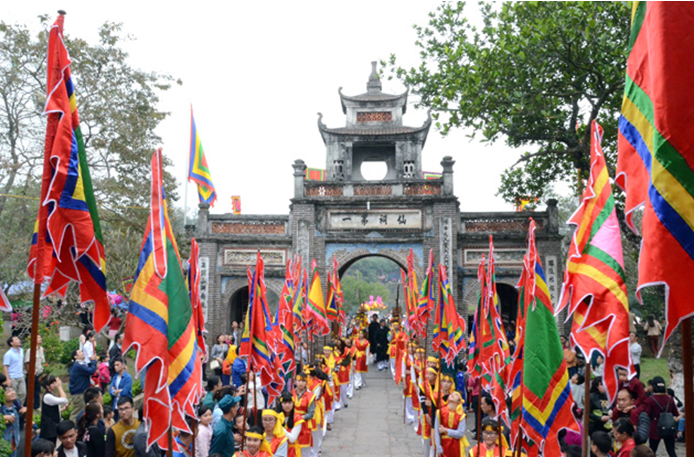
More than 2,000 years ago, Cổ Loa where the essence of heaven and earth converged, was the capital of the Âu Lạc state under the Thục King Dynasty, after the Văn Lang state of the Hùng Kings. After thousands of years, the ramparts still exist, evidence of a Dynasty that existed from 257 to 208 BC. Historical stories associated with legends and myths about the Kim Quy God helping King An Dương defeat Bạch Kê Tinh (White Rooster spirit), building a citadel and giving the king golden nails to make magic crossbows to fight against enemies. The tearful love story of Princess Mỵ Châu when Trọng Thủy took advantage of her love to steal the magic crossbow, causing King An Dương and his army to fall, lose the citadel, and end a Dynasty. Mythical stories are intertwined with the history of a real period, demonstrating the ancient polytheistic beliefs of the Vietnamese people in the process of building the country.
Cổ Loa Citadel is located in 4 communes: Cổ Loa, Dục Tú, Việt Hùng, Uy Nỗ. Cổ Loa Temple is located on the left side of the Hoàng River, in the Inner Rampart of Cổ Loa commune, where King An Duong is worshiped. The surrounding area includes 8 villages, called “Bát xã Loa thành”, in each village there is a communal house, temple or shrine worshiping King An Dương, Princess Mỵ Châu, Kim Quy god or general Cao Lỗ... On the full moon day and the first day of the month, these are places for people in the village to offer ceremonies to show their respect to their ancestors and gods. Cổ Loa Festival takes place from the 6th to the 18th of January every year, jointly performed by the people of “Bát Xã Loa thành”.
The central area of the festival is Thượng Temple. Thượng Temple (Cổ Loa commune – Đông Anh district – Hanoi) worship King An Dương and and those who have contributed to the country. King An Dương - the successor of the Hùng Kings’ period - founded Âu Lạc state and relocated the capital from Phong Châu (Bạch Hạc, Việt Trì, Phú Thọ) to Cổ Loa, in 208 - 179 BC.
Legend has it that on the 6th of the first lunar month, Thuc Phan entered the palace. On the 9th of the first lunar month, the king (An Duong Vuong) was crowned and entertained all the soldiers. To remember the king's merits, Co Loa villagers and other villages in the region take the 6th of the first lunar month as a festival day. It is a sacred day for the Cổ Loa residents: “If you die, you will leave your children and grandchildren; When you live, you will never forget January 6” (Folklore)
According to ancient historical documents of China and Vietnam recorded such as: “Giao Châu ngoại vực ký, Đại Việt Sử ký toàn thư, Khâm định Việt sử thông giám cương mục. Basically, the above documents all say that in the 3rd - 2nd centuries BC, after the successful resistance against the Qin army in 208 BC, King An Dương succeeded Hùng Kings and moved the capital from Việt Trì to Cổ Loa, built the Âu Lạc state, and built fortified citadels to fight foreign invaders. Legend has it that Co Loa citadel was built in a spiral shape, with 9 rings, a circumference of 9 miles, and a dense population. A brief overview is as follows:
During the Hùng King period, Văn Lang country of Lạc Việt tribes consisted of 15 tribes, the capital was in Phong Chau (Bach Hac region, Viet Tri city, Phu Tho province today). Thục Phán (King An Dương) was a leader of Tây Âu tribe in the northern area of Văn Lang at that time, and together with many chieftain of Tây Âu and Lạc Việt organized the resistance war against the Qin army, and was revered by ancient Vietnamese leaders as highest commander. In 208 BC, after the successful resistance war against the Qin army, Thục Phán was ceded to the throne by King Hùng Duệ, the 18th generation. After ascending the throne, King An Dương united the two tribes of Tây Âu and Lạc Việt, changed the country's name to Âu Lạc, and moved the capital to Cổ Loa. Cổ Loa is a highland area of the Red River Delta, then surrounded by large streams connecting the Red River and Cầu River. That is the Hoàng Giang River, whose traces are still clear today with sections called Thiếp River or ”Ngũ Huyện Khê” River (the river flows through 5 districts: Yên Lãng, Kim Anh, Đông Ngàn, Yên phong, Tiên Du). By waterway, you can go up to the North or Northwest, you can also go down to the Northeast or Southeast, and to the coastal areas, that is is suitable for building citadels.
With an extraordinary effort, King An Dương and Âu Lạc army and people in a short time built a massive and unique citadel. King An Dương knew how to make full use of the natural elements of the topography to create a deep moat citadel with enough favorable factors for defense and attack: advantageous marine and land traffic, inside and outside combined, we can advance and retreat quickly, the enemy is difficult to invade. With the unity of the army and people, and the legendary arrow-shooting weapon - "Magic Crossbow", King An Dương defeated the invading Triệu Đà army many times.
In 206 BC, the Qin Dynasty collapsed, Triệu Đà in Nam Hai district, conquered Tượng and Quế Lâm districts, established Nam Việt, set up the capital in Phiên Ngung, always wanted to expand to the South and rule Âu Lạc.
Although the Âu Lạc state only existed for a short time, its imprint was very strong and this historical period is mentioned by the people here as heroic and tragic legends.The existence of Cổ Loa citadel for more than two thousand years is an eloquent testament to that historical period, the outstanding military talent of King An Dương, the enduring strength and indomitable spirit of our people in early history.
The legend of King An Dương building Cổ Loa citadel is the most remembered legend, because it is associated with the history of the first period of the national defense and construction, ancient Vietnamese culture and reminds us of our national roots. Cổ Loa Festival is associated with an important deity, the king who founded Âu Lạc and built the "citadel" of Cổ Loa/a citadel with a long history that has been classified as a special national relic. The entire legend of King An Dương building the capital, founding the country, fighting against enemies, lives forever in the hearts of the people with gratitude and admiration. Therefore, in the villages and communes of Cổ Loa citadel, there are temples, communal houses, shrines to worship the King and those who have contributed to the country. First are the villages of the "Bát xã Loa thành", include: Cổ Loa, Văn Thượng, Mạch Tràng, Sằn Giã, Ngoại Sát, Đài Bi, Cầu Cả và Thư Cưu, of which the main temple worships King An Dương in Cổ Loa is considered " Tiên Từ Đệ nhất".
The book "Ngọc phả cổ lục" still kept at Thượng temple records " the king's birthday was August 11, his death date was March 7”, and “ăn Sêu bà Chúa” on August 13".
At Cổ Loa temple, 21 conferments of the feudal dynasties from the Lê - Nguyễn to King An Dương with respect and admiration as a "talented man in the world" who deserved the credit for building the country and has been worshipped by the Cổ Loa residents forever at Cổ Loa temple (now part of Cổ Loa vestige site, Cổ Loa commune, Đông Anh district, Hanoi). The people of Cổ Loa commune, since ancient times (Lê dynasty), have been allowed by the royal court to organize ceremonies, worship King An Dương, maintain customs, so they are called "custom-making" people; they were exempted from taxes, worked for free, and assigned people to take care of regular offerings (orders and edicts during the Le and Nguyen dynasties clearly stated this).
Previously, Cổ Loa Festival was held regularly from every 3 to 5 years for 12 days, from January 6 to 18. If it was the year of "Phong Đăng Hòa Cốc" (favorable weather, good harvests), the festival would be very grand. After 1952, the festival no longer had the participation of “Bát xã Loa Thành”, but Cổ Loa village maintained on a small scale, simple rituals, with sacrifices and some folk games. By 1990, the festival with the participation of Bat Xa Loa Thanh was restored and held annually. Currently, this festival is held for 2 days (May 5 - 6), the 6th is the main festival, on a large scale, with close coordination between state management agencies of Hanoi city, The Management Department of Cổ Loa vestige site, authorities at district and commune levels, communities in villages where the festival takes place. It has become an important, major festival of Vietnam.
After January 6, the remaining 7 villages in the "Bát xã hộ nhi" organize festivals in their villages until January 18 and end the Cổ Loa festival (on the 8th, Văn Thượng village festival, on the 9th Ngoại Sát and Đài Bi village festivals, Mạch Tràng village festival on the 10th, Cầu Cả village festival on the 11th, Sằn Giã festival on the 13th, Thư Cưu village festival on the 16th).
Cổ Loa Festival, spring of Quý Mão year, held from January 26, 2023 to January 27, 2023 (ie the 5th and 6th of January, Quý Mão year) at Cổ Loa Special National Monument. The festival recreates rituals, folk games, traditional performances, sports competitions, public art performances and experiential activities such as crossbow shooting, bamboo jumping, monkey bridge, throwing cotton ball…
We invite people and tourists to attend the Co Loa Festival spring 2023.
MANAGEMENT DEPARTMENT OF CỔ LOA VESTIGE SITE
